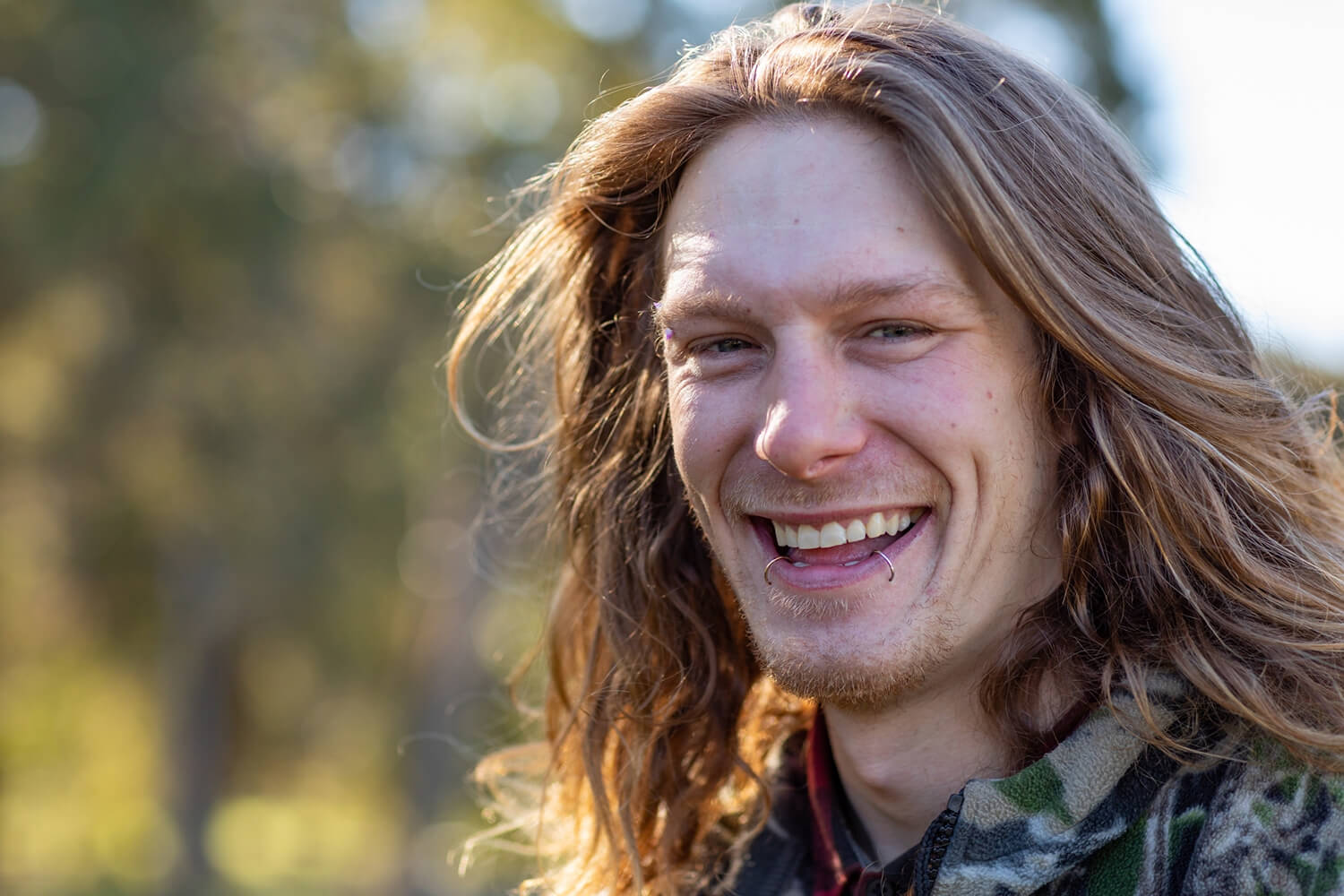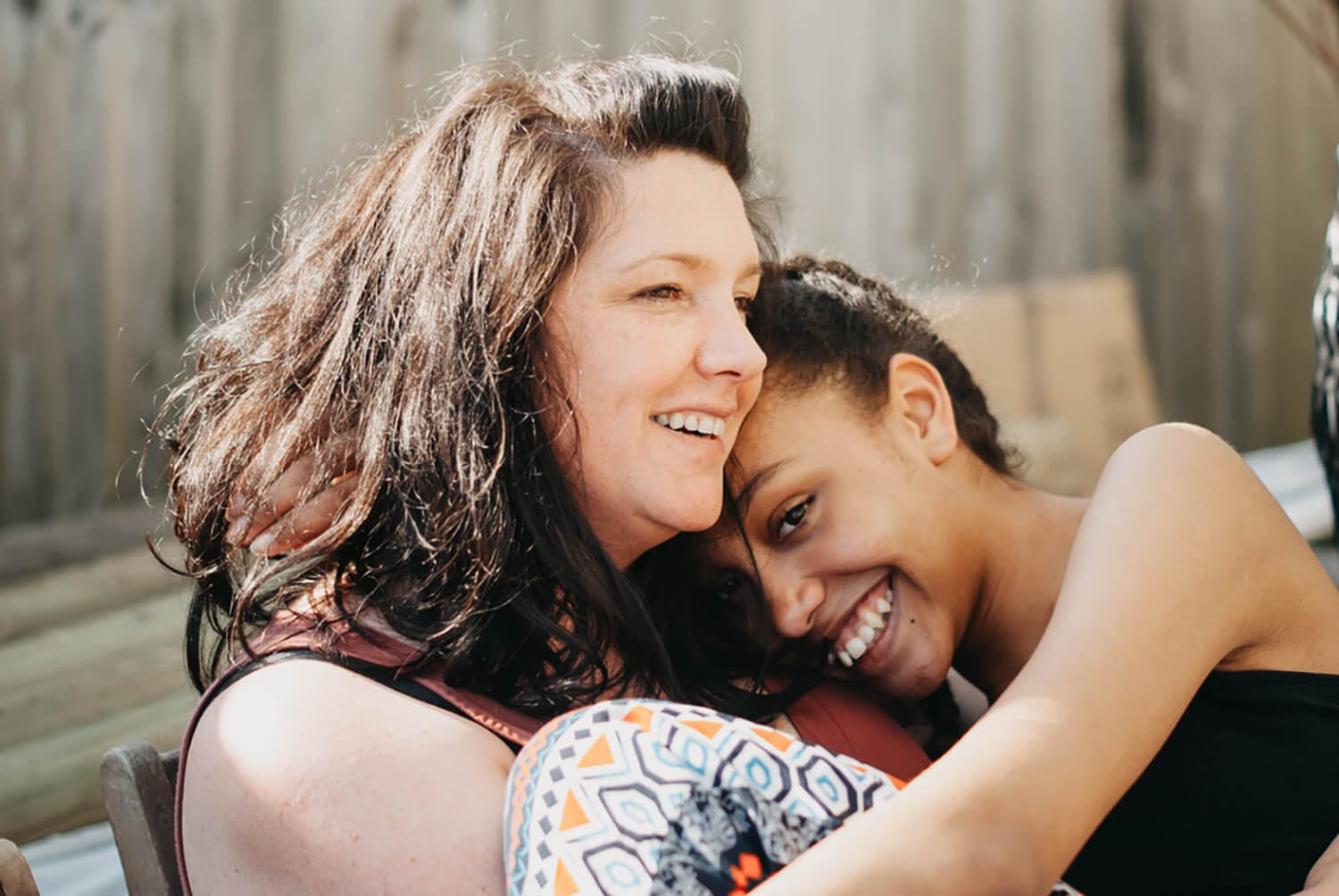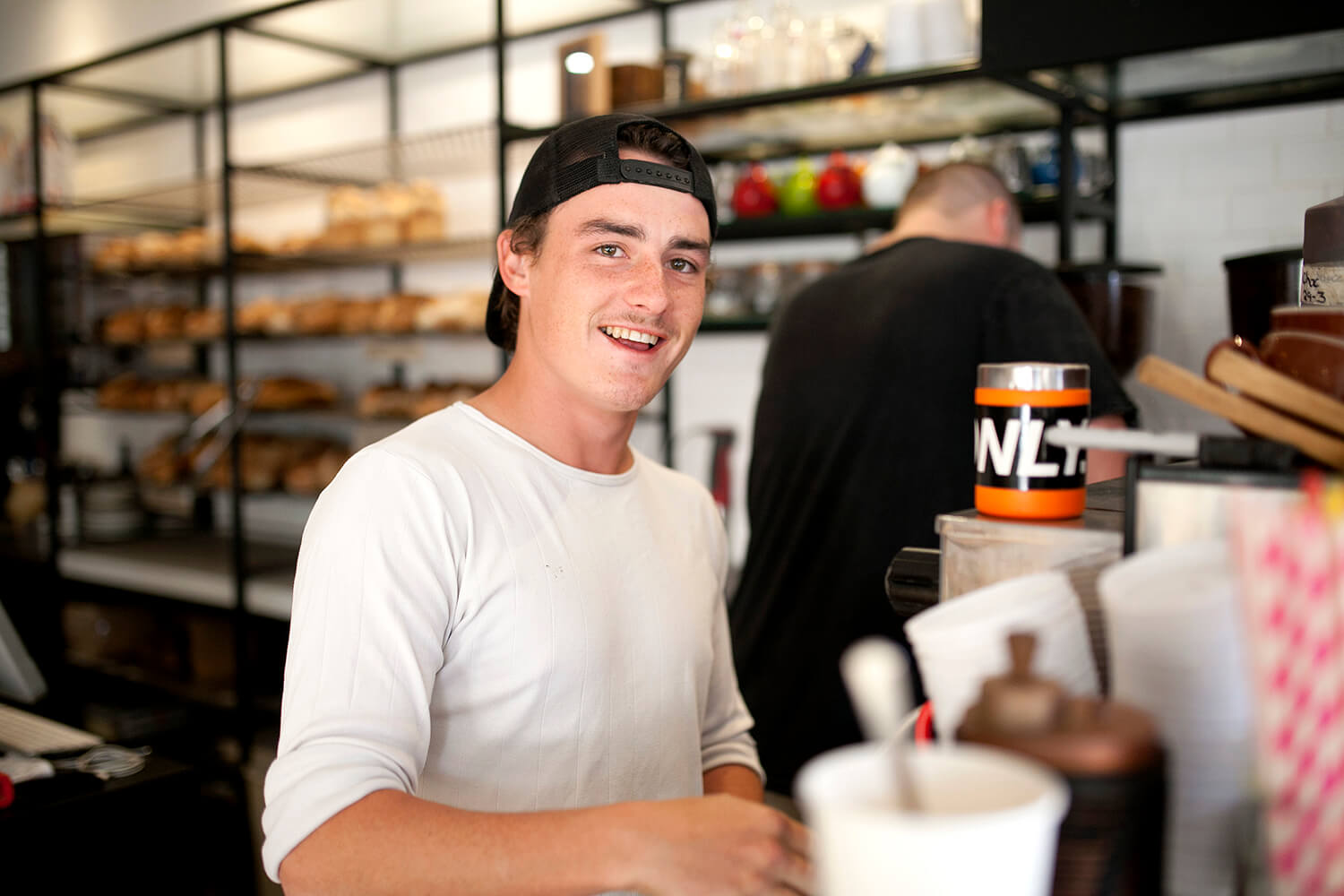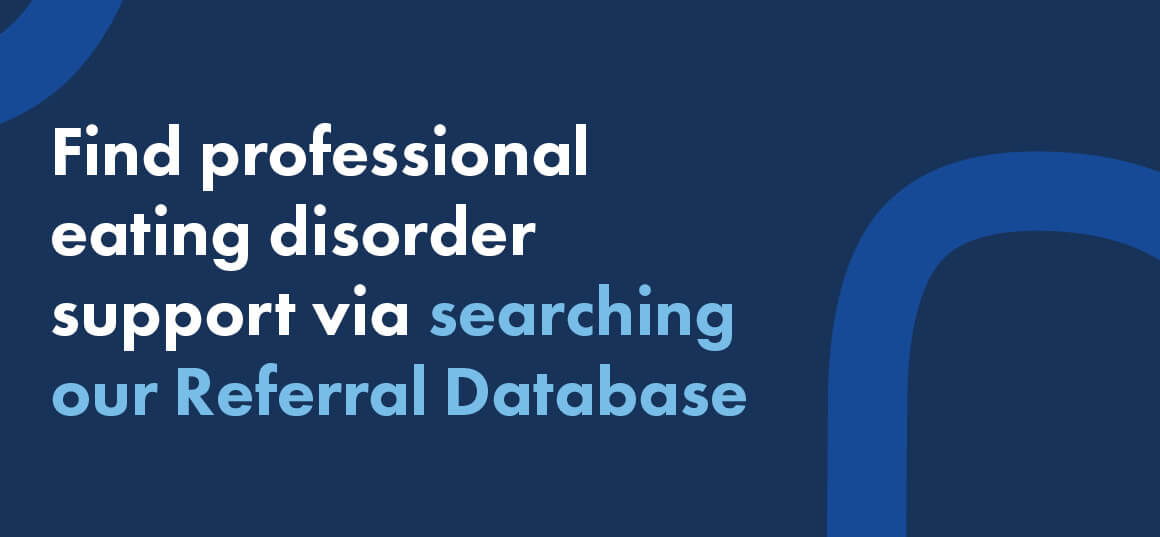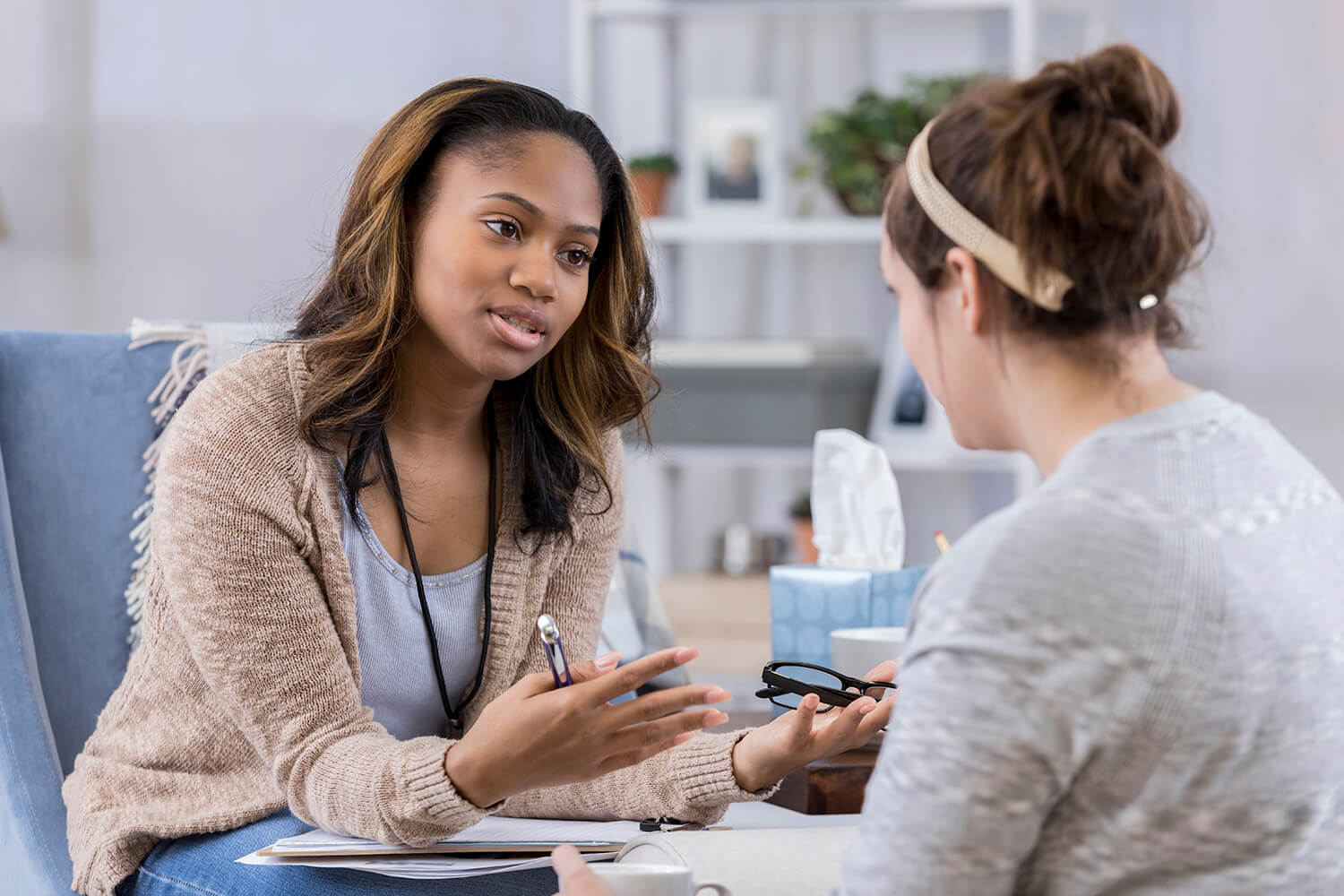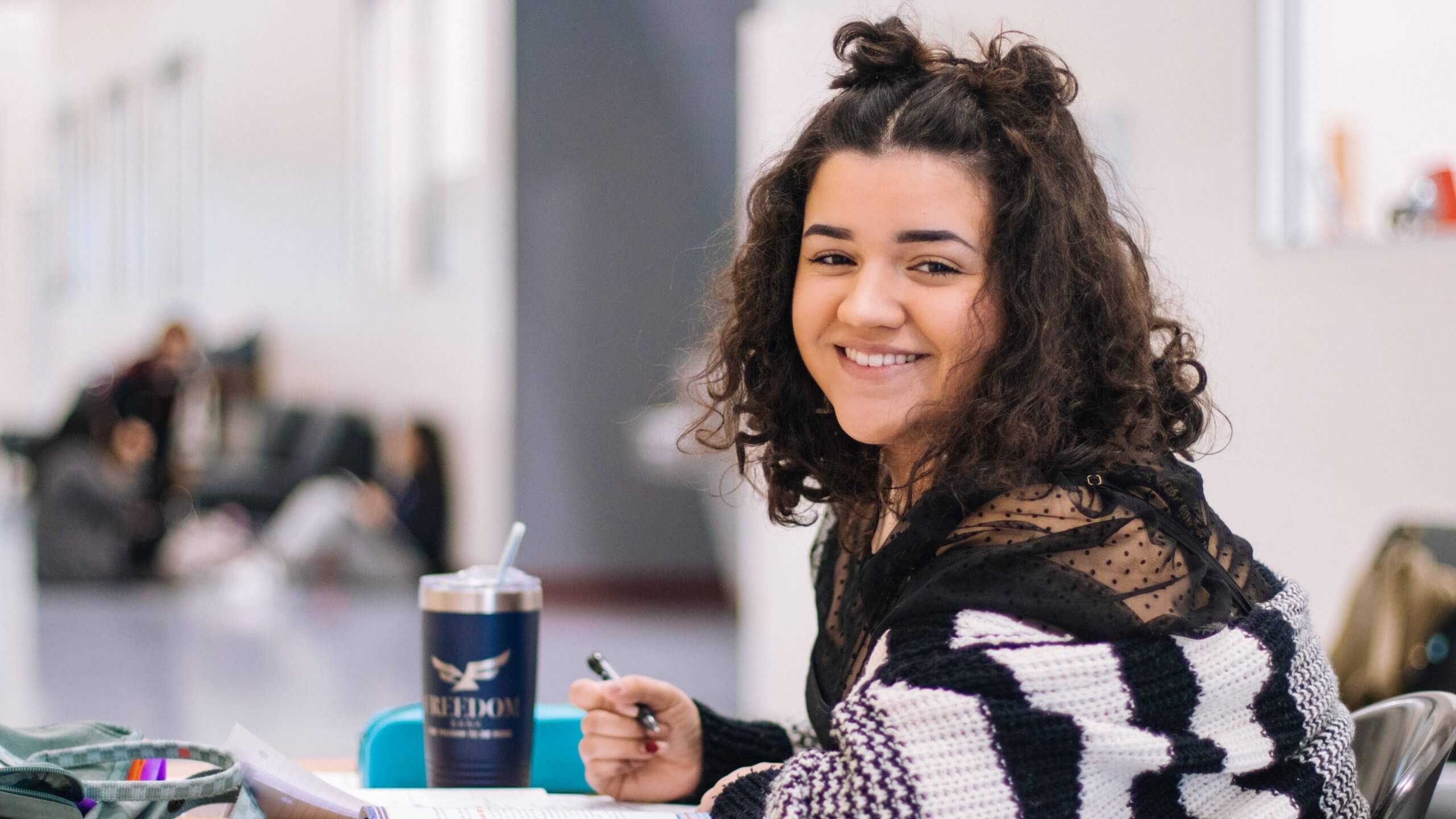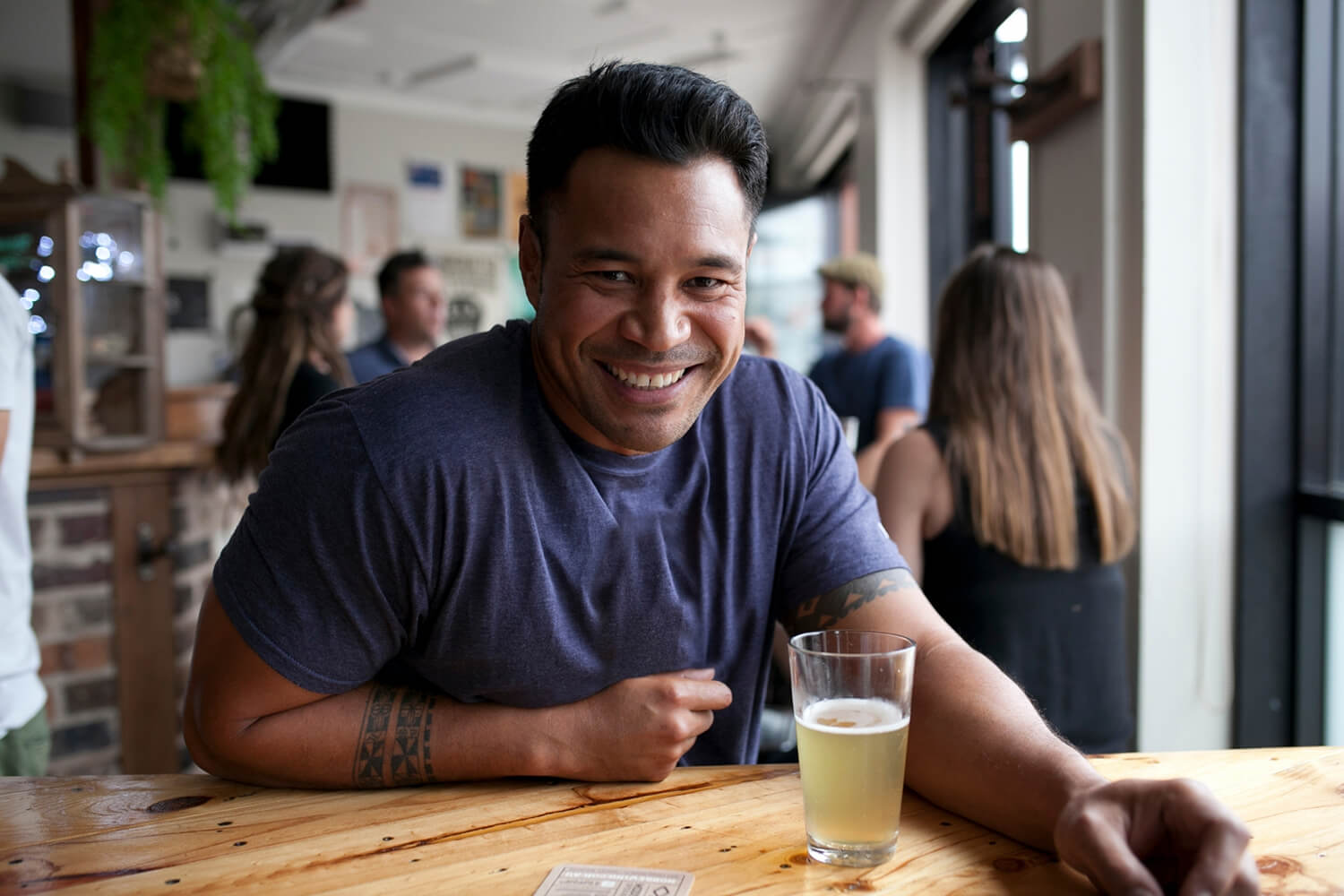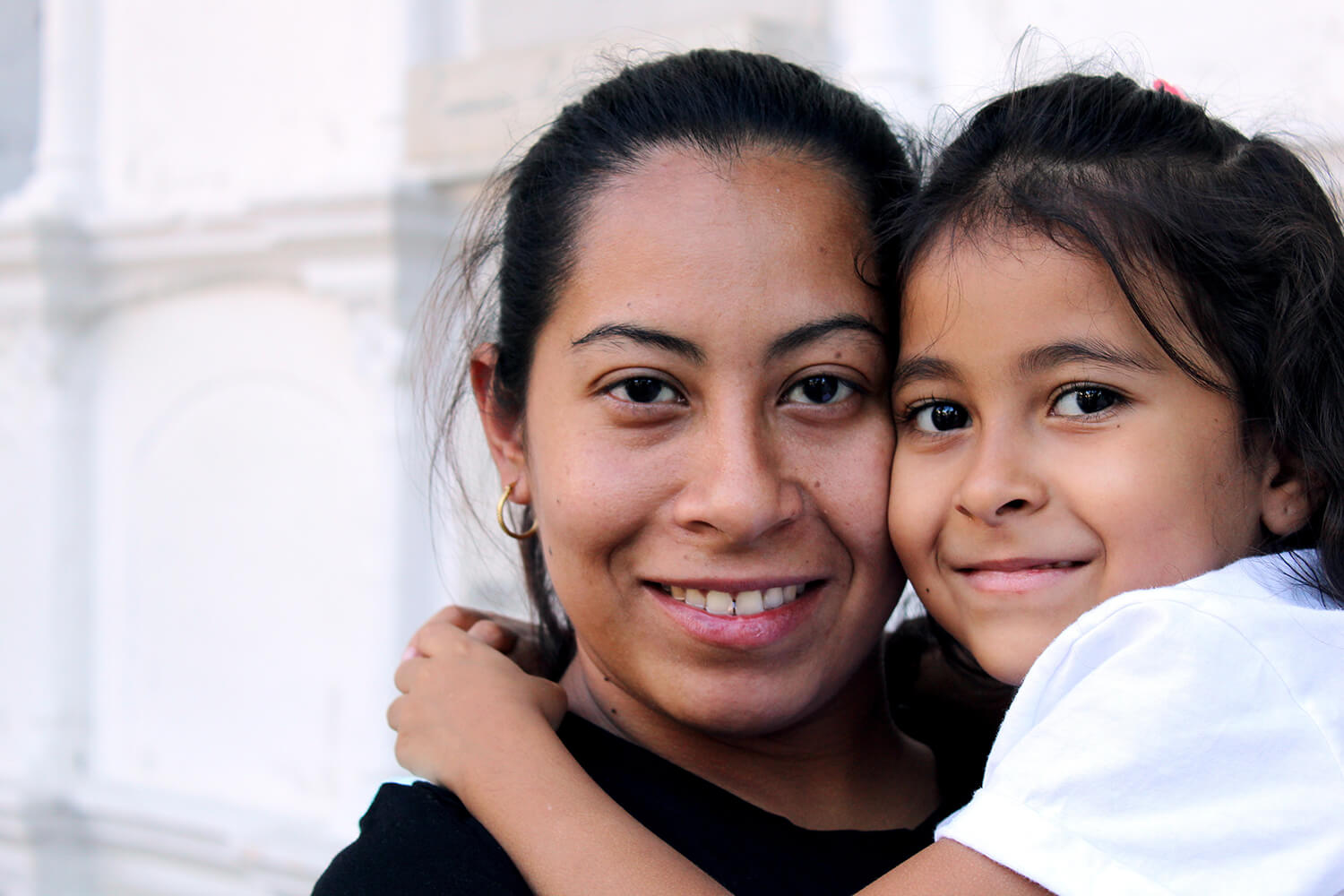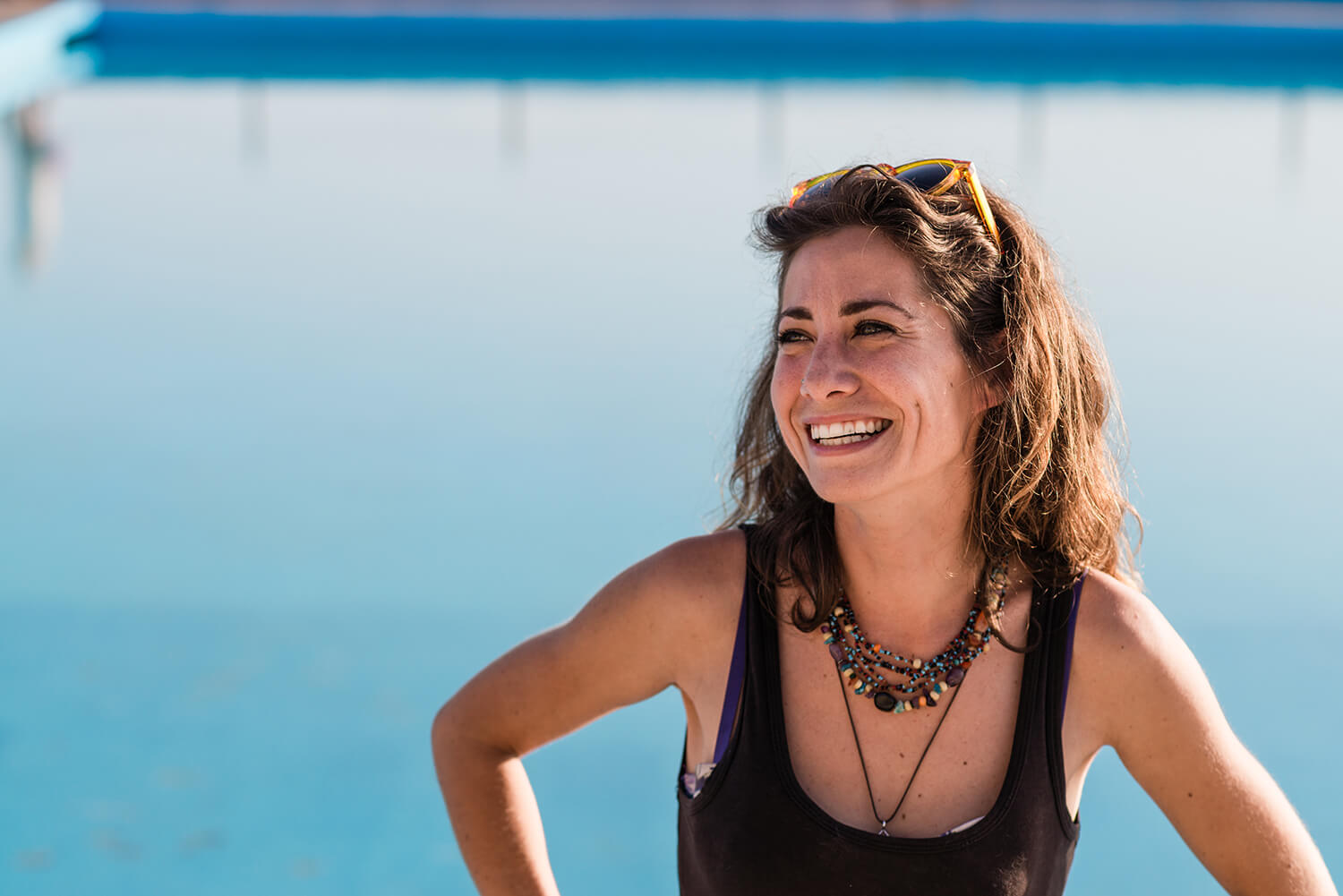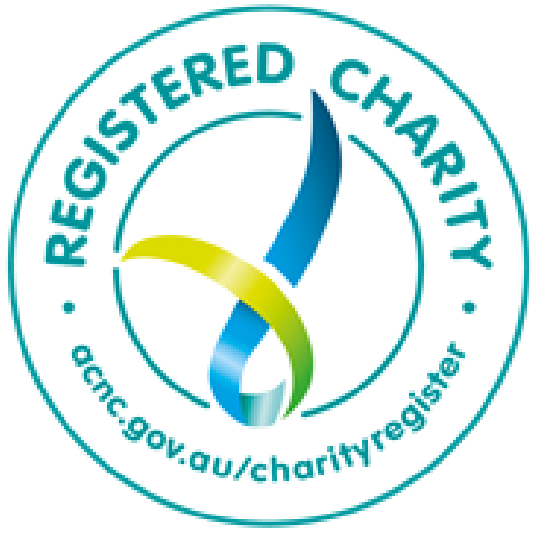In Depth with treatment pioneer Carolyn Costin
Nobody has had a more profound impact on the treatment of eating disorders than Carolyn Costin. We’re excited to have her as the first featured guest on our Let’s Talk In Depth show, which will run mid-monthly as a complement to Butterfly: Let’s Talk.
After recovering from Anorexia Nervosa in her 20’s, Carolyn found her calling in helping others to recover. Her unique philosophy was so successful that she first took it to the public through a series of books, then she opened the world’s first licensed, residential eating disorder centre in California.
Not only is her model of care now globally recognised, it has also been replicated in many locations. Most recently, Carolyn played a key role in creating Australia’s first residential recovery centre, Wandi Nerida, which opens this July.
In this candid discussion, Carolyn opens up about her intuitive ability to diagnose and treat her own eating disorder and how that led to a decades long career helping thousands to find full recovery too.
Sam Ikin:
Sometimes we need a change of pace, a chance to sit back and really get to know someone, and that’s why we’re adding a new kind of episode to The Butterfly, Let’s Talk podcast. This is our first episode of Let’s Talk In Depth where we dive in deep and really get to know some of the amazing people that we’ve met through the show. Our first guest for this special episode, revolutionized eating disorder treatment in the United States, and she inspired Australia’s first residential eating disorder recovery facility, Wandi Nerida, based on Queensland Sunshine Coast. So, let’s dive in for the first episode of Let’s Talk In Depth.
Carolyn Costin:
My name is Carolyn Costin and I’ve been in the eating disorder field for about 40 years. That’s really weird when I say it. Actually, it’s a little bit more than 40 years, and I started off as a therapist. I didn’t really have an intention to specialise in eating disorders, but I had been a school teacher prior to that, and the principal at my high school had said, “There’s this girl that had that thing you had.” This was back in about 1978.
Carolyn:
When I worked with her, it was just one of those things that I felt like I was inside her head. I knew all the questions to ask, and I got her on her way. She became recovered and then someone else referred me somebody. And so, I started making a small name for myself in this area. And then ultimately, in some ways, right place, right time, because I was recovered. I just treated people as if they could be recovered, and I’ve never really looked back from that stance. Now, six books later and running several hospital programs and opening up the first residential treatment centre in the United States, I’ve kind of been doing a lot in the eating disorder field.
Sam:
Your backstory is that this was just more of an intuitive thing. It sounds like it was a very organic kind of process to get you to become the Carolyn Costin that everybody knows about now.
Carolyn:
Yeah. It wasn’t thought out. I didn’t go to school and say, I’m going to be an eating disorder therapist. In fact, when I saw that first patient, I remember thinking, well, who can make a business out of this? They’re just not that many of them, but I think the amazing thing was I structured my own recovery. I worked very hard. I didn’t have a therapist. There wasn’t any treatment. There was no such thing as an eating disorder dietician. I tried to go to a couple of therapists. They had never seen anyone with anorexia before and said some pretty weird things we won’t go into. And so, I did a lot of work on myself. And I put a lot of that into the practice.
Carolyn:
And then there are just so many things that I think that I did that have turned out to be very, well, it sounds like tooting my own horn a lot, but it turns out I was doing CBT before I even knew what CBT was. Meaning, that instead of going back and doing psychodynamic psychotherapy, I was asking people, write down what you eat, tell me your thoughts about those foods, circle what you are purging and just getting into the weeds. That’s what you have to do with this illness.
Sam:
Yeah. I’ve spoken to a lot of clinicians here who say that after they’ve worked for a few months and they’ve spoken to a bunch of people—these are people without a lived experience themselves—they start to see it everywhere. They’ll go to a cafe, and they’ll see the way people are behaving around food. And they’ll say, probably yes, you’re probably affected. They develop this intuition, which sounds like that was something that you just had.
Carolyn:
Well, they develop a better radar for it. I think that I was able to ask questions because I had done it. I was early in and I had a lived experience that I could use, and I really was recovered. I mean, I had gained the weight back and I had mitigated all the different kinds of things like the perfectionism and done things, principles, and different skills to ease my anxiety and all these things. And so, I just started treating people. And then of course, over time I started seeing other people were treating people and reading the very early journals and articles and stuff that came out. And so, it just progressed.
Sam:
Can we go back to your lived experience before we move on because I’m really keen to find out about the program. What was your lived experience and when did that happen?
Carolyn:
Well, when I was about, oh gosh, I think I was 14 or 15, my friends and I all went on a diet and having the perfectionistic tendencies that I did, I just became very controlling around it and I didn’t want to let it go. I made a bet with a girlfriend’s father. You take the temperament, you combine it with the fact that diet culture was really strongly hitting people my age because Twiggy was out modeling and things like that. What happened was it sort of hijacked my brain because I have the perfect temperament for it, the perfectionistic tendencies, the tendency to be anxious and harm avoidant and the things we know now are temperamental traits we find in people with anorexia nervosa.
Carolyn:
It just fueled itself and nobody knew what was happening. At first, I got all this praise for it until it just got worse and worse till it started out where certain foods weren’t allowed and it kind of boils down to all foods not really allowed, at least not very large quantities. This was a time when, this was before none of the eating disorder journals were around, and there were a few newspaper articles and things like that, but it was hard to get good information about eating disorders at that time.
Sam:
Sounds like it was something that you had to discover yourself. And through this process, you’ve developed an eight-step model of care.
Carolyn:
The way I treat people, that book, it’s called 8 Keys , has become a very popular book, but that book, 8 Keys To Recovery From An Eating Disorder, was grown out of Norton and Sons here in the US, have a series, a book series called 8 Keys To Recovery From Migraines, 8 Keys To Recovery From Trauma. They have a whole series and they asked me to write the eating disorder one. I originally thought that didn’t make any sense to me. It takes 2,850 things to get better, and how am I going to put it into eight?
Carolyn:
But astonishingly, when I sat down and looked at my treatment programs, looked at the success that I had with outpatient, partial hospitalization, inpatient, residential, I came up with eight key components and then worked with a colleague of mine who had formerly been a patient who was recovered, and she was a therapist and we sat down and just wrote it all out. But it’s not like the 12 steps. I believe that you can be recovered from this. I strongly believe that. I think the evidence shows that. The one thing about the 12 step is that they sort of take the attitude that you’re always recovering and that you’re different than normal people. You are always in recovery or recovering one step at a time kind of a thing. You have a disease.
Sam:
Yeah. I’m talking from personal experience. When my disorder was getting out of control, and I had binge eating disorder, we were encouraged to find our own groups and do the 12 steps. And then you’ve got Overeaters Anonymous, which is also based on the 12 steps. I’ve tried to do the 12 steps a bunch of times, but it never worked. I think that’s not a path that I’m following at the moment. From my experience, this is something that a lot of people have tried as a way of getting through it—before we’d heard about your program, I guess.
Carolyn:
Right. I think it makes some sense because there are addictive components and qualities to an eating disorder. Even the feeling of restriction can become sort of habitual, I like to use the word habitual rather than addictive, but if you have bulimia or binge eating, there are some particularly addictive qualities to that in terms of what happens with dopamine levels, especially with large binges and all the release of dopamine and all that. But the reason I think it’s so different is I think you can actually overcome this. I think that you can get to a point where I don’t think you have to exclude sugar and white flour. In fact, I have thousands of patients now who were binge eating disorder, who now eat those foods and learn to eat those foods in moderation. I don’t think that it is out of and beyond their ability to control.
Sam:
I guess, we’d always kind of thought it was something that you just have to live with forever or manage, I guess, forever. That’s a really nice little hopeful message to get out there. I guess you developed this program and then Monte Nido came shortly after?
Carolyn:
I had been in private practice for 15 years, and I had also run several hospital programs, but what I found about the hospital settings, not everybody who needs 24-hour care needs acute medical care. I thought there was a big mistake in putting a lot of people who, yes, they needed to be monitored and supervised and have an external structure and have people around for support, but they weren’t medically compromised. They didn’t really need to be in a hospital.
Carolyn:
The other thing I noticed in the hospital setting, you didn’t have people going shopping for food and preparing their food, cooking their food, eating their food around the dinner table like a family, all the skills that you need when you go home. Here are all these people in the early eighties in these hospital programs, and then we would discharge them, and they would be on their own to go shopping. When you’re in a hospital, you go down to the cafeteria or you get your food served at your bedside in a tray, and you don’t have anything to do with making it, touching it, preparing, smelling it, all the things that trigger somebody who kind of has a phobia or is unstable or impulsive around food.
Carolyn:
I thought there’s something wrong with this picture. I need to have a place where people can go, and we teach them the real life skills that they need to use when they get out of treatment. Otherwise, it was a revolving door. I honestly have seen that a lot in my visits to Australia and patients who have come here for treatment with me from Australia. I think my record was a girl in her twenties who had been hospitalized 21 times because of the inability to sustain the gains that she made in a hospital because there just isn’t an opportunity in a hospital setting to do all those skill-based treatments.
Sam:
I think the hospital experiences as well is quite oppressive or a lot of people say that have reported that, and it treats symptoms rather than causes. So, it’s not surprising that someone would leave and then relapse almost immediately and need to go back again shortly.
Carolyn:
Well, if you just think about weight, weight loss does not cause anorexia nervosa, just like weight gain does not cure it. What was happening in the hospital is what they were doing is putting weight on people, then they would just lose the weight again afterwards. With bulimia, the same thing. People had to learn how to eat their fear foods as opposed to keep you away from your fear foods.
Carolyn:
Early on in my career, people would come to me and say, I have an eating disorder, I’m binging on cakes and cookies, but then they would try the approach, the abstinence approach, not eating cookies and cakes, but then they would binge on roast beef and potato chips and French fries. It wasn’t the food. It was the behavior. It was their relationship to food and their body size and whatever other comorbid problems were going on that they were using food to cope with or medicate their pain.
Sam:
It is something that points to the need for more hospitals like Monte Nido.
Carolyn:
I’m just going to correct you, more residential treatment centres.
Sam:
I’m sorry. Yes. More centres, more clinics. Clinic is probably the wrong word as well. Yes, I guess residential centre. How does it work? How does it work when you go into Monte Nido? Is it for everyone?
Carolyn:
Well first of all, I don’t own Monte Nido anymore. I have to make that clear. I sold Monte Nido. It’s a different company today than it was. I sold it in 2016. I can still talk about what it’s like because it’s what I would do in any residential. First of all, yes, you can mix the different diagnoses, but obviously there are important things to pay attention to because they’re not the same. When you’re in a group with the different patients who meet different criteria, I mean, one of the most important things to say is, look, you’re all here because you have an unnatural relationship with food. Food and weight have taken an unusual priority in your life, including how you evaluate yourself. What we’re going to do is get back to a natural, “healthy”, and “healthy” in quotes. Each person finds what’s appropriate for them.
Carolyn:
The relationship to food and your body, that’s the goal. And so, you can mix diagnoses and you’d have to be transparent. You have to be open about it. You have to say things when you’re running groups. The people with binge eating disorder might say things like, oh, we admire all you guys who have anorexia because you have such willpower and you have to be astute as a clinician to say things like, “That’s not willpower! If she really had willpower, she would eat this cookie right now.”
Sam:
Yeah. I’m sorry to laugh at that.
Carolyn:
No, no. It is kind of funny, but I like to use humor and I say this, you have to be able to know how to show people when they think their logic has turned on its head. Although, they think they might be in total control, you can show them that’s not really control, because if it was really control, you could eat it. But your brain is hijacked and obligates you to not eat the cookie. So, you no longer have free will or control like you think you do. Things like that.
Sam:
You’ve been to Australia and you’ve seen how the system works here. How do you think Australia would benefit from having a similar kind of residential facility?
Carolyn:
Well, I mean, look at it this way. I had so many patients sent from Australia here. Why should they fly all the way here and leave their families, when family work is very important? There’s just no reason for it. I’m so glad for the residential program and I’ve actually been there. I’ve been involved in it from early, early on in the sense that I was originally going to help set it up. But then when I left Monte Nido, I had a non-compete and I couldn’t be involved. But I’ve been on the sidelines and talking to the people involved because I still am involved somewhat with The Butterfly Foundation there. It’s going to be a game changer in Australia.
Sam:
In what kind of a way do you think it is? Because we were talking about a large country and just the one clinic.
Carolyn:
Here’s the thing, I mean, I was the first clinic in the US. It took a while for it to be how it is now, where residential treatment programs are all over the place, because when something’s new, it sort of has to be tested and people have to believe in it.
Carolyn:
Now, I’m not saying you open a residential centre and it’s automatically successful. I mean, the clinicians have to be well-trained, and they have to know what they’re doing. There’s a lot of specifics about how a residential centre should be run, and a former VP of clinical programming at Monte Nido is actually one of the clinical consultants sharing some of that wisdom. Going in and out of hospital just isn’t working. And if you have that experience and the person’s not getting better, then you look for an alternative.
Carolyn:
When I opened here in California, the first Monte Nido, so many families had tried hospitalisation or outpatient treatment. But outpatient wasn’t enough and the hospital was too confining and too medically oriented so they ended up saying, “I’m willing to pay if it helps”. I think Australia’s going to have that in the beginning. It may even be surprising that Australia will get people from some of the other nearby countries who also then don’t have to fly all the way to America to get treatment.
Sam:
Cool. The other thing I wanted to ask is as through Monte Nido, with these kinds of facilities, there’s always new research and new findings and things that have come from that facility. What are some of the findings that have come from Monte Nido and your experience with residential centres like that?
Carolyn:
Well, interestingly enough, I think that not weighing patients and telling them their weight. Not showing them their weight was significant. That goes a bit against the current CBT, cognitive behavioral therapy, which promotes weighing patients and showing them their weight. Monte Nido’s outcome study was a one-to-10-year outcome study, and we can talk about that in a few minutes. It’s pretty significant. It fared well in terms of what happened with weight in the diagnosis of anorexia and bulimia, because we didn’t study BED, we didn’t have enough numbers to study BED.
Sam:
BED stands for binge eating disorder, which we now know is one of the more common eating disorders.
Carolyn:
Not only was that significant, but patients report that learning to wean themselves off the scale and not looking at the number was one of the most significant things, as well as having the opportunity to work with people with lived experience, people who are recovered. Those were two things that came out in the patient evaluation surveys that I always thought would be significant, but then it just surfaced in the data we were getting from the evaluations when patients left and the follow-ups 10 years down the road.
Sam:
That’s amazing. Like you said before, Australia is a little bit behind. How long do you think it’ll take us before we start to benefit from what you’ve got? Is it going to be just a ‘You build it and it will come’ kind of a situation?
Carolyn:
Well, it was like that here, but I have learned about some of the bureaucratic problems that happen. I mean, they happen everywhere. But the way that you must collaborate with people in order for them to take the reins and to not just get better while they are being monitored and supervised, but to internalize those skills and take them out with them to avoid relapse can happen in residential. This is less likely to happen in an inpatient hospital setting where there are all the controls. You try to run it in a way like a family, including the exercise and, like I said, going shopping, even going to buy new clothes when the patient gains weight and needs to buy new clothes. All of these things have to happen. It may very well be that I do some consulting because I’m out of my non-compete now that makes it so that I can’t consult with other programs. I can never own my own treatment centre, but now I can consult and help out.
Sam:
But look, I think this is a good spot for us to wrap it up. Can I ask you though for just a little message of hope before we go, for somebody who might be stuck in the middle of a really difficult spot with their recovery?
Carolyn:
Well, I will say this: Your eating disorder cannot be more powerful than you are. If you think that, then you’ve been given some misguided messages, even if you’re the only one telling yourself that, because you give it its power. I teach everybody who walks in my door, “You were born with a core healthy self. Over time, you developed an eating disorder self, and it doesn’t get its power from the outside. It’s not like some alien being invaded you. You give it its power.”
Carolyn:
And so my work involves strengthening your healthy self and that part of you heals your eating disorder. And so there’s no way everybody who I see, I always say, if I could do it, so could you because I think the power lies in, if you’re perfectionistic and controlling and have anxiety like me, you just have to take that and learn how to channel that into, now I want to do a perfect slide show, or I want to do a perfect talk or have this radio show go well. My anxiety changed. Now I just recognise that I have high energy.
Carolyn:
I want to say, I really believe that people can get better, but I think they have to work in a collaborative place, and they have to deal with the battle not being between you and a treatment team, or you and a therapist, or you and your mom. The battle is between you and you, and you beginning to talk back and learn how to strengthen your healthy self so it becomes back in control again.
Sam:
Pretty powerful words there, Carolyn. Thank you so much for your time this morning. I really appreciate it.
Carolyn:
Oh, you’re welcome. Thank you so much for having me.
Sam:
To find out more about Wandi Nerida, head to Butterfly.org.au/Wandi-Nerida. It’s spelled W-A-N-D-I N-E-R-I-D-A. If you liked this episode of the Butterfly Podcast, you might want to write a review or leave us a rating wherever you get your podcasts. We would really appreciate it. And remember, as always, please share it with a friend. I’m Sam Ikin. The Butterfly podcast is an Ikin Media Production for Butterfly Foundation.




